Monster Hunter Wilds is easily one of the very best video games I've ever played, period. And trust me, that's no exaggeration. Going into the latest Monster Hunter title, I was a bit skeptical, and for reasons that I will explain later in this review. However, as I started my journey as the Hunter in the Windward Plains, most of my concerns slowly drifted away.
To me, Monster Hunter is one of the most precious franchises. It's one I grew up with, and despite its ups and downs in recent years, it has never disappointed me. To that end, Monster Hunter Wilds had a mountain of expectations to fulfill, not only as a successor to one of my favorite games of all time but also as a new generation of Monster Hunter.
Having spent more than 80 hours playing the entirety of the base game, I can safely say Monster Hunter Wilds has not only met my expectations, it has surpassed them. It's every bit the Monster Hunter I craved since having rolled credits on Iceborne. However, it's also much more than just "more Monster Hunter." Monster Hunter Wilds is a generational leap forward.
Check out All Monster Hunter Wilds Monsters to know who you are going to face!
Monster Hunter Wilds brings the kind of changes we fans have been asking for
Despite my adoration for Monster Hunter World and the past titles in the franchise, I was never really a fan of the series' UI and presentation. I'm not a graphics snob, but I believe that in games that aim to immerse you in their worlds, having a good graphical presentation is paramount. To me, the UI in Monster Hunter games never felt intuitive, especially for newcomers.
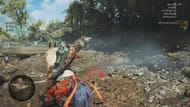
It used to be the kind of "jank" that I had to put up with, just because I adored the core gameplay and combat loop. However, with Monster Hunter Wilds, I think Capcom has finally made the kind of changes that I have been asking for since Monster Hunter Generations Ultimate. Let me give you a really good example of this.
If you have played Monster Hunter World, you will remember how cumbersome it was to manage the food buffs, right? This has been simplified and made way more intuitive in Monster Hunter Wilds. Furthermore, remember how confusing it was to keep track of the weapon-upgrade trees in MH World, especially with Iceborne? That too has been simplified in Wilds.
Essentially, with Monster Hunter Wilds, Capcom took a page out of MH Rise's simplified menu systems and made it even more intuitive and newcomer-friendly, and I'm all for it. Increased ease of access in the menu-based systems, means less friction between hunting quests. In addition to that, there are no "slap-on" weapon designs in Wilds.

This is the single biggest win in terms of aesthetics, in my opinion. As much as I love Monster Hunter World, the slap-on designs made the process of unlocking new weapons somewhat disheartening. Playing through Monster Hunter World, I really missed those flashy weapon designs from the older games.
And as a Great Sword main, there's nothing more discouraging than a bad-looking Great Sword, with really good stats. Thankfully, Monster Hunter Wilds doesn't have this issue. In fact, in my playthrough, I spent a good chunk of my time unlocking as many Rarity 8 Great Swords as I could, just because I liked every single one of the designs.
Proof of a Hero
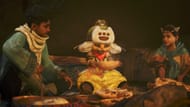
Now, only if there was a Layered Weapons mechanic. Moving away from the weapon designs, I should also talk about the game's soundtrack. I'll be honest, I wasn't a big fan of Monster Hunter World's soundtrack. Save for the Astera theme, I don't think I liked any of the original scores for that game. However, in Wilds, I think I like every single OST.
While nothing in Monster Hunter Wilds surpasses Rise's soundtrack, especially Kamura's Purification, it certainly comes close. The Beauty of Nature, which is the main theme of Wilds, is arguably one of the best pieces of original music I've heard since Raeb's Lament in God of War Ragnarok. In addition to that, I also really like Wilds' version of Proof of a Hero.
Also, a special mention should go to Arkveld and the Iceshard Cliffs' themes. Suffice it to say, I really like Monster Hunter Wilds' soundtrack. While it has yet to surpass Monster Hunter Rise in the OST department, it certainly topples its spiritual predecessor, Monster Hunter World in the same.
A living, breathing open world
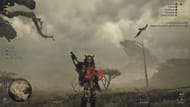
Apart from the significant UI uplift, Monster Hunter Wilds is also one of the most graphically impressive RPGs I've ever played. While a great deal of the game's visuals is upheld by its art style, it's backed by the near-photorealistic graphics courtesy of the RE Engine. I do have some complaints regarding the game's performance and technicalities.
However, that doesn't take away from the fact that it's one of the most impressive-looking RPGs to date. The sheer attention to detail is genuinely staggering. While many games claim to feature a living, breathing open world, they seldom justify it in-game. However, Monster Hunter Wilds does just that.
The open world isn't just a gimmick, it feels like a natural part of the evolution of the series. It's a world that feels like it can exist even without the player Hunter's intervention. Exploring the Forbidden Lands you will often find monsters and endemic life just going about their daily routine. Monsters don't even aggro on you unless provoked.
You can often find monsters just going about their business, just like how animals can be seen tending to themselves, in real life. These things are quite subtle but are present, and add a ton to the game's immersion factor. MH World also featured a similar dynamic ecosystem, albeit it was quite limited in scope, due to the game's sectioned-out map design.
A Hunter must HUNT
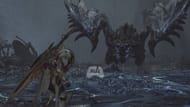
Despite the major overhaul that's been made to the game's visuals and presentation, Monster Hunter Wilds' core gameplay remains the same as the previous titles in the series. For those who are new to Monster Hunter, the core gameplay and progression in these titles revolve around two things - hunting monsters, and crafting better gear.
The combat is also mostly unchanged from the past games, especially Monster Hunter World. You still have the choice between 14 different weapon types, each offering a completely distinct playstyle to master. However, there are a few new features added to the combat system in Wilds which, I think, make it the best iteration in the entire series.
Remember the Slinger introduced in Monster Hunter World, which was later made essential in Iceborne? While not many players liked the "tenderize" mechanic using the Slinger, I didn't mind it all that much. However, I have to say, compared to Monster Hunter Wilds' Focus Mode, the Slinger is definitely inferior.
The Focus Mode essentially replaces the need for you to rely on the Slinger to "tenderize" monster parts, which in turn helps maintain the combat momentum, without forcing you to use a secondary tool, every now and then. For those unaware, tenderizing a monster lets you deal additional damage to them, and also easily inflict partbreak.
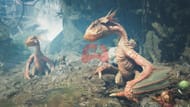
I wasn't really vibing with the Focus Mode, since aiming with a Great Sword isn't really intuitive or fun. However, as I played through the game, it eventually started to click with me. And now having poured in more than 80 hours, I really enjoy the Focus Mode and Focus Strike mechanics.
The Focus Strike mechanic really makes you feel like a, well, Hunter. Instead of flailing your weapon wildly, Focus Mode lets you make precise targets. I do have some complaints regarding the balance, but none of them concern the implementation of Focus Mode. It's a really great addition to the series, something I feel should become a mainstay going forward.
Tools of the trade
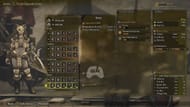
Focus Strike certainly isn't as fast as the Wirebugs in Monster Hunter Rise, but it serves a completely different purpose, and compared to the Slinger, does a mighty better job at that. Apart from the Focus Mode, there are a few other small additions to the combat, like the Offset Attacks and the Power Clash. Both these are essentially extensions of standard combos.
However, if used right, they can help you turn the tides of a battle. Unfortunately, unlike Focus Mode, Offset Attacks and Power Clash aren't available to every single weapon type. Thankfully, I was using the Great Sword, which had access to both. While it took me some time, once I got the hang of Offset and Power Clash mechanics, it became second nature.
Also, both these attacks can be pulled off while you're in a combo, which made it all that more fun, to use. There is a learning curve attached to the new combos, but it shouldn't take too long for new players to adjust to these systems. I remember struggling with monsters like Doshaguma, by relying solely on the basic moveset of the Great Sword.
However, now that I have become more comfortable with the new combo extensions and the Focus Mode, I'm able to easily take down High Rank monsters (including Arkveld), in roughly 12 to 15 minutes, tops. This is the kind of progression I prefer in RPGs, not just stats-driven, but also skill-driven.
Is Monster Hunter Wilds easy?
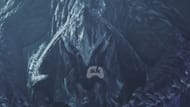
Well, the answer to this depends entirely on whether Monster Hunter Wilds is your first Monster Hunter or not. If it is, then it's going to be one of the most challenging RPGs you've ever played, no questions asked. However, if you're coming to Wilds with years of experience, especially with Monster Hunter World, you're probably going to breeze through the new title.
And I think this is a good thing. See, Monster Hunter is a skill-focused RPG. Yes, your stats do matter, but what matters the most in these games is how you've grown as a Hunter. If you already have a main weapon with which you have years of practice, you've already crossed the biggest hurdle most new players face when introduced to Monster Hunter.
However, while the game can feel a bit easier, especially in Low Rank, don't get it twisted, it's not an easy game by any stretch of the imagination. As someone who has been a regular with the series since Monster Hunter Generations Ultimate, even I had brief moments in Monster Hunter Wilds that pushed me to my limits, and yes, I did cart, I carted a lot.
However, the difficulty here isn't unfair, something that I've been pretty vocal about when it came to Iceborne and Sunbreak's Anomaly Investigations. Monster Hunter Wilds' difficulty, in my opinion, feels totally fair and balanced. This is precisely why I think it's the perfect entry point for newcomers.

Furthermore, on some levels, I appreciate the game not being nearly as challenging as well, Iceborne or Sunbreak. I really enjoyed the story in Wilds, which yes, sounds quite weird for a Monster Hunter, but hear me out. Monster Hunter Wilds, tries to innovate not only in terms of its progression and gameplay, but also its world-building and narrative.
Unlike past entries where the story was just a backdrop, something that gave us Hunters a reason to go out and well, hunt, Monster Hunter Wilds takes a more serious approach with its storytelling. I will explain a bit about Wilds' storytelling in a later section. Now, the reason I brought it up here was to say that the story of Wilds is really good.
And honestly, I would've hated for it to come to a screeching halt because an overturned Gore Magala was roadblocking my progress. That said, if you want a challenge, there's plenty to be had in the endgame. I won't spoil anything in terms of Monster Hunter Wilds' endgame or its campaign's finale, but I can explain the progression system employed.
Quality-of-life updates and the Seikret
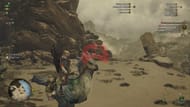
One of the things that I really like about Monster Hunter Wilds is that it has massively reduced the friction between build crafting and hunts, i.e., the real meat and potatoes of a Monster Hunter experience. No longer do you have to return to the Gathering Hub, i.e., Base Camp to start a quest or Investigation. You can do so right from the map while you're out exploring.
Furthermore, cooking and eating are no longer limited to the resting camp or Gathering Hub. As long as you have the BBQ Grill in your Radial Menu/Tool Belt, you can cook meals for instant buffs. Also, another really cool thing that I really liked is your applied buffs (including food buffs) are now on a time limit.
This means, that even if you cart during an Expedition or quest, your buffs won't vanish into thin air. You'll still retain said buffs, as long as the timer hasn't expired. Also, I should mention the cherry on top, i.e., the Seikret. I didn't expect to like this addition, but I'm a fan of these Raptor-looking birds. The Seikrets are a massive improvement over the Palamutes.
The Seikrets not only help you explore the maps faster, but they also let you auto-track monsters. And let me tell you, auto-tracking in Monster Hunter Wilds is a boon. I know not all fans are thrilled about the auto-tracking, but I certainly appreciate it. Also, if you want, there are still plenty of Investigation opportunities in Wilds, a la Monster Hunter World.
Guiding Lands? No, Guiding Wilds
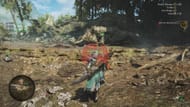
If you've played Monster Hunter World's Iceborne expansion, you should be familiar with its endgame, i.e., Guiding Lands, and how it functions. If not, let me give you a brief overview. In Guiding Lands, you essentially get to explore a small open-world-like map, without any limitations related to carting. As you explore, you will come across a random assortment of monsters.
Taking the monsters down or capturing them increases your Investigation level, and once you hit a specific threshold, higher-difficulty monsters, i.e., Tempered variants start to appear. Taking these down rewards you with better loot, which lets you craft more powerful gear, and then hunt even more difficult monsters.
It's a pretty impressive and dare I say, engaging endgame loop, one that I sorely missed in Sunbreak. However, the Guiding Lands did become repetitive after a while, especially due to its incredibly small map size. However, this is precisely what Capcom addressed with Monster Hunter Wilds and its endgame. Wilds' endgame is essentially the Guiding Lands but on steroids.
The progression is virtually identical to the Guiding Lands, but instead of the random monsters, you have the agency to choose what you want to hunt/farm. This is further enhanced by the game's vast open-world map, with distinct zones. The map design in Monster Hunter games has always been top-notch, and Wilds is no exception to this rule.
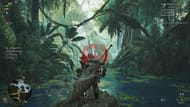
In fact, Monster Hunter Wilds' map is probably the best that the series has had since Iceborne's Hoarfrost Reach. It's rarely that I end up liking every single map in any RPG, Monster Hunter games included. In World, I hated Rotten Vale, in Rise, I despised every quest that forced me to go through Lava Caverns.
However, in Monster Hunter Wilds, I don't think I disliked any of the regions. Although I don't really like lava-themed areas in games, I somehow enjoyed exploring the Oilwell Basin. The map design alone makes the endgame worth it, and then there's the added incentive of better loot and more challenging monsters to fight.
A narrative masterpiece?
While it will be a stretch to call Monster Hunter Wilds a "narrative masterpiece," I do think it deserves being called that compared to the series' past iterations. Don't get me wrong, gameplay is still the primary focus of Wilds, which I think I've already gushed a lot about. However, the story here and its execution made me realize that Monster Hunter too can have good storytelling.

The narrative starts fairly slow, with the Hunter and the Guild investigating the "White Wraith," and why it ended up attacking a group of villagers. The premise was gripping, but it took its time to sink its teeth into me. However, once it started picking up pace, it didn't let up.
In fact, by the halfway point in Low Rank, I was so invested in the story and the characters, that I didn't even bother grinding for armor sets, something I've made a habit of doing since MHGU. I just wanted to see how the story unfolds, and the relationships between characters developed. There were moments that had me excited, amazed, awestruck, and at times, even sad.
But rarely did I feel like the story was just dragging along, like I wanted to skip the cutscene and move to the thing that really matters i.e., the gameplay. And let me tell you, the conclusion of the Low Rank storyline is more than worth it. The High Rank, on the other hand, is a mixed bag in terms of the story, which I think is perfectly fine.
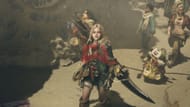
I was completely satisfied with how Low Rank's story ended, and with High Rank, the narrative takes a back seat in favor of more engaging gameplay. However, that's not to say High Rank doesn't have a good payoff. Certain characters and relationships get fleshed out in HR, with the ending in particular being one of the best moments in the entire game.
I also really liked how the Hunter, i.e., the player, isn't some lowly newbie just getting started in the monster-hunting profession. Instead, the Hunter has a more powerful presence, both in the story and the gameplay. This is probably the first time the player character actually feels like a, well, Hunter.
Not only that, the Guild Members and the Support Hunters also are a massive step up compared to the past iterations of the series. In Monster Hunter Wilds, you actually feel like you're a part of a Guild. Furthermore, the Support Hunters aren't just random NPCs, but actual Hunters, who are perfectly capable of holding their own against monsters.
As a side note, if you were disappointed in how Capcom ended up revealing a good chunk of the new monsters in the game's marketing and trailers, worry not. There are still plenty of surprises that await you in both, Low Rank and High Rank. Monsters are the bread and butter of the series, and it's something Capcom has put in extra effort this time around.
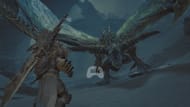
Some of the returning monsters, like the Rathian and Rathalos, will end up surprising you in ways that you might not have imagined. I don't want to spoil it for you, but I'd say this, expect the unexpected. And then there are the new monsters. The roster in Wilds is easily the biggest it has ever been in the entire series, for the base game.
Going into Monster Hunter Wilds, the roster was one of my biggest worries. As much as I adore Monster Hunter World and Rise, the base game roster in those titles was far from ideal. Sure the title updates ended up adding a ton of new monsters, but the base roster wasn't up to par. That's thankfully not the case with Wilds, far from it actually.
The fun of "Jolly Co-operation"

The Monster Hunter series has always been about the fun of cooperating and taking down mighty behemoths with the power of "teamwork." You certainly can play the game as a single-player action RPG, and that's what most players tend to do for their first playthrough. However, the franchise is best known for its multiplayer features, i.e., the SOS mechanic.
While the Monster Hunter series has always been about teamwork, and as a solo player, I seldom got to experience this aspect of the series. Only in Iceborne did I start partaking in SOS, and also the series' rather robust multiplayer gameplay. Despite that, I always thought how cool it would be to have AI NPCs to take along on hunts, especially for us solo Hunters.
This niche wish of mine was fulfilled in Sunbreak where Capcom added the Follower mechanic. Followers were essentially NPC Hunters that you can recruit and take with you on quests. These NPCs were fully capable of taking charge of the hunts and basically allowed you to enjoy the fun of "jolly co-operation," without having to go online.
I really liked the Follower system in Sunbreak. However, it being limited to the expansion and just the story quests and Anomaly Investigations, felt quite limiting. This is something Capcom addressed in Monster Hunter Wilds in a major way. In Wilds, you also have access to Followers, I mean, Support Hunters.
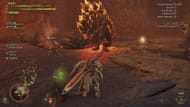
However, instead of just two, you can summon up to three of these Hunters to aid you in hunts. Furthermore, you won't even need to micro-manage the Support Hunters. To summon them, you just need to fire your SOS Signal. If you have multiplayer enabled, other players can join you, and if not, Support Hunters will heed your call for help.
In fact, if you're online, but no one joins you, the Support Hunters will swoop in to the rescue. And boy do the Support Hunters help out. The AI for the NPC Hunters is incredibly smart, acting almost like another player. They not only help deal additional damage to monsters but can also place traps, heal the party, as well as apply Defense and Attack buffs, periodically.
Hunters like Olivia, who is my personal favorite, can also blind monsters with Flash Bombs, especially if you get grabbed or are at low HP. I really like the Support Hunters system in Monster Hunter Wilds. While it does make the Low Rank hunts a cakewalk, they do serve as a great way to help new players ease into the Monster Hunter experience.
The technical and gameplay shortcomings
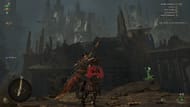
Throughout the entire review, I've been nothing but positive about Monster Hunter Wilds. However, while it is an excellent video game, it's not immune to its fair share of issues. Although the list of shortcomings is fairly small, it's still something I think players should be aware of going into the new Monster Hunter game, especially if they're planning to get the game on PC.
I'll get the obvious out of the way, Monster Hunter Wilds' PC performance is far from ideal. I was playing the game primarily on my main machine, which has the following specs:
- CPU: AMD Ryzen 5 5600X
- GPU: Nvidia Geforce RTX 4070
- Memory: 16 GB DDR4
- Storage: 1 TB NVMe (Gen-4)
While I admit it's no NASA-grade PC, it certainly isn't a potato, and the specifications far exceed the recommended requirements. Yet, I wasn't able to maintain 60fps without the DLSS trickery. That said, the performance of the final version is vastly superior to that of the Open Beta Test. I was easily getting 10-20fps more on the same presets that I used in the OBT.
That said, at 1440p, I had to turn down some settings to Medium with DLSS set to Quality to get a playable experience. Even then, whenever huge explosions or volumetric effects showed up (which, mind you, is part of every other battle against Arkveld), my frame rate would happily take a nosedive to the low 40s.
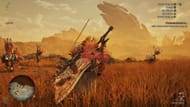
I'd admit, this did not make me feel good about the game, at least in the opening few hours. I did ease into it as the hours went by, but honestly, PC performance isn't up to snuff. Thankfully, it's not as bad as Dragon's Dogma 2. And I think performance can be improved with a few post-launch updates, or maybe even a day-one patch (which wasn't part of the review build).
Another issue I have with the game is related to the balancing. This isn't anything major and can be taken as a personal bias toward Great Sword. While I like the new combos added to the game, I don't think I appreciate True Charged Slash (TCS) being nerfed to the ground.
In past games, pulling off a perfect TCS used to feel like an accomplishment, which rewarded you with huge damage numbers popping up on your screen. However, in Monster Hunter Wilds, TCS deals roughly the same damage as the Charged Slash, with the added bonus of being able to stagger the monster. And guess what? Even the regular Charged Slash can stagger monsters in Wilds.
I understand why Capcom decided to nerf TCS, I mean, you can chain the combo multiple times in a row with Power Clash and Focus Strike. However, it still feels weird to not see those big numbers pop up on the screen while performing a perfect True Charged Slash.
In conclusion
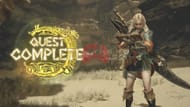
Monster Hunter Wilds is the quintessential example of how to evolve a franchise with its audience, while also staying true to its roots. It's not only the evolution of the foundation laid down by Capcom back in 2018 with MH World, but a culmination of ideas and themes to form the perfect "Monster Hunter experience," that I and fans of the series have been craving since Iceborne.
While the technical shortcomings are a blemish on the experience, they seldom hold the game back from greatness. Monster Hunter Wilds is what Elden Ring was to the souls-like genre, a perfect title for not only the monster-hunting veterans but also newcomers. To me, it's the perfect RPG, and something that ended up far surpassing all my expectations.
As Reggie Fils-Aimé once said, "If it's not fun, why bother?" And in my honest opinion, Monster Hunter Wilds is incredibly fun. And you know what, sometimes all a video game needs to be is, well, just that, "fun." That's not to say Monster Hunter Wilds isn't more than that, but it's a game that exemplifies the term "fun." And I think that's the biggest accomplishment for any video game.
Even now, as I pen down this review, I can't think of anything more than to just go back to grinding some Tempered Monsters, and unlocking those last few armor sets. Monster Hunter is indeed back, and it's back with a bang!
Monster Hunter Wilds
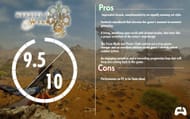
Reviewed on: Windows PC (Review code provided by Capcom)
Platform(s): PS5, Xbox Series X|S, Windows PC (Steam)
Developer(s): Capcom
Publisher(s): Capcom
Release date: February 28, 2025
Check out our Monster Hunter Wilds Review if you are wondering whether the game is worth it.
